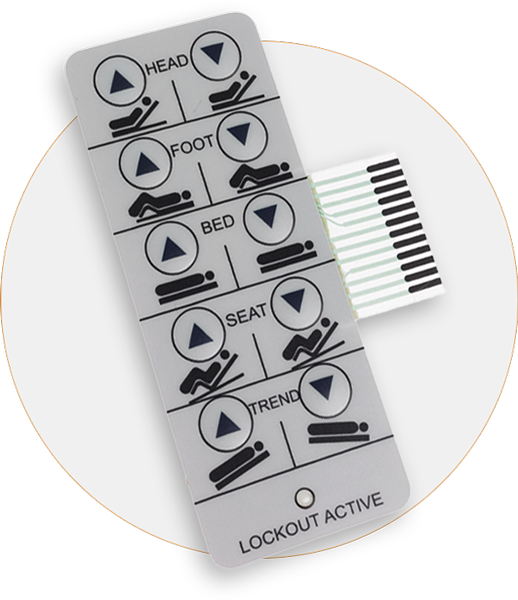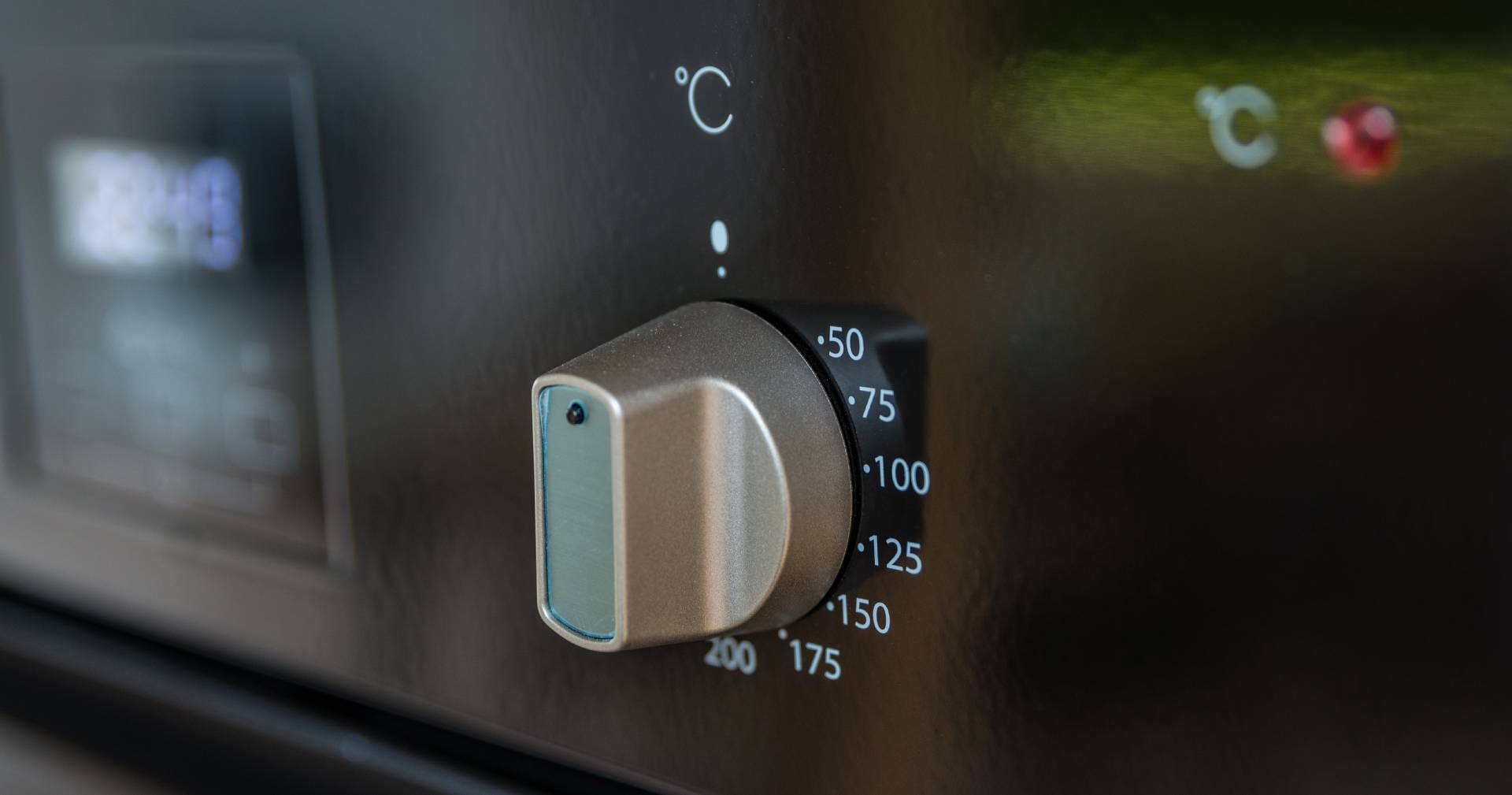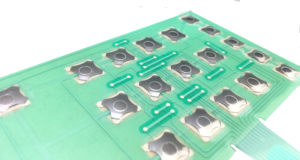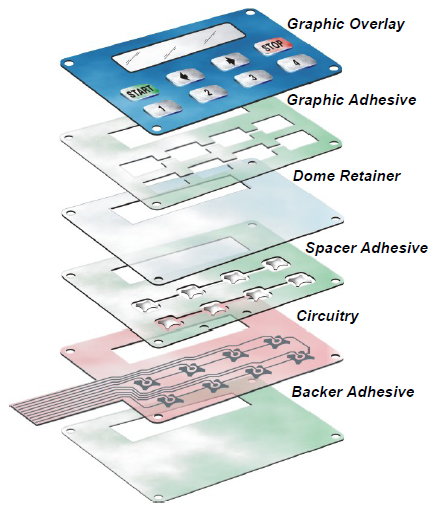Choosing the right membrane switch manufacturer can significantly impact your product's success.
Choosing the right membrane switch manufacturer can significantly impact your product's success.
Blog Article
All About Membrane Switch Over: Comprehending Its Layout and Capability
When you believe regarding the control interfaces in contemporary devices, membrane layer buttons typically come to mind. Let's explore what collections membrane changes apart from other control systems.
What Are Membrane Layer Switches?

Their seamless nature makes them very easy to tidy and resistant to dust and moisture, an important attribute in many environments. Membrane buttons can likewise be customized pertaining to form, dimension, and graphics, permitting suppliers to produce one-of-a-kind user interfaces tailored to particular items. Plus, they're lightweight and slim, which helps in decreasing the general bulk of tools. In general, membrane switches play a substantial role in improving individual experience throughout a wide range of applications.
Just How Membrane Changes Job
When you press a trick on a membrane switch, it activates an uncomplicated yet efficient device. membrane switch manufacturer. The top layer, commonly made of versatile product, pushes down onto a conductive layer underneath it.
You'll discover that the responsive feedback differs based on the switch style, supplying either a soft click or a more obvious response. Once you launch the key, the membrane layer go back to its original placement, resuming the circuit and stopping the signal. This procedure happens nearly immediately, making certain a responsive individual experience.
Membrane buttons are popular as a result of their longevity and resistance to dust and moisture, making them ideal for different applications, from house devices to medical tools. Understanding this procedure aids you value their extensive usage.
Secret Parts of Membrane Layer Buttons
Recognizing the vital parts of membrane buttons is essential for understanding their functionality and layout. At the core, you'll find the graphic overlay, which gives the aesthetic interface for customers. Underneath that, there's a spacer layer that separates the circuit layers, guaranteeing that they don't make get in touch with until pushed. The circuit layer is where the magic takes place; it is composed of conductive traces that complete the circuit when you press the switch. One more important component is the sticky support, allowing the switch to follow surface areas securely. Lastly, the safety layer shields against environmental aspects and wear, extending the switch's life expectancy. Each part plays a substantial duty in making sure dependable efficiency and individual communication. By understanding these elements, you'll obtain understanding right into exactly how membrane changes run and their value in various applications.
Products Used in Membrane Layer Change Design
The efficiency and resilience of membrane layer changes heavily depend on the materials utilized in their style. You normally experience polyester and polycarbonate as primary substratums because of their exceptional toughness and versatility. These products stand up to scratches and chemicals, making them suitable for requiring settings.
The conductive layers often use silver or carbon, chosen for their reliability and conductivity. membrane switch manufacturer. Silver offers remarkable efficiency, while carbon is an affordable choice. For the overlay, you could think about a matte or shiny finish, depending upon your visual needs and individual experience
Make particular to choose adhesives that hold up against ecological variables like temperature and humidity. Picking the appropriate products will guarantee your membrane button stands the examination of time.
Design Considerations for Membrane Layer Buttons
While making membrane switches, it's vital to take right into account different aspects that affect their performance and user experience. Begin by focusing on the design and button dimension; make specific they're intuitive and simple to browse.
Don't ignore the graphic style; clear labeling and shade contrast are considerable for visibility. Verify your design fits environmental factors, like moisture or temperature variants, which might affect efficiency. Ultimately, bear in mind the importance of screening models with genuine users to gather comments and make necessary modifications. This iterative procedure helps you improve the layout, verifying it fulfills both useful and visual demands successfully. By carefully thinking about these components, you'll produce a membrane button that boosts usability and contentment.
Applications of Membrane Buttons
Membrane switches are versatile parts located in different applications, from commercial devices to consumer electronics. You'll see their influence in devices that need long lasting interfaces and in gadgets that take advantage of smooth designs. Comprehending these applications assists you value the functionality and functionality of membrane buttons in everyday technology.
Industrial Equipment Usage
When you're wanting to boost the performance of commercial devices, membrane buttons provide a reliable remedy that combines toughness with user-friendly design. These switches are ideal for harsh environments, providing resistance to dust, dampness, and chemicals. You'll discover them in control panels for manufacturing makers, heating and cooling systems, and medical tools, where accuracy and responsiveness are vital. Their low profile suggests they fit flawlessly right into various equipment, saving useful area while preserving ease of usage. With adjustable graphics and backlighting options, you can produce an user-friendly interface for drivers, improving performance and security. And also, their long life expectancy minimizes upkeep prices, making them a smart financial investment for your industrial applications. Welcome membrane layer switches to enhance your procedures view and boost overall efficiency.
Consumer Electronics Integration
In the domain of consumer electronic devices, membrane layer buttons play a vital role in boosting customer interaction and tool functionality. You'll locate them in devices like microwaves, remote controls, and gaming consoles, providing a smooth way to communicate with modern technology. Their smooth style enables simple assimilation into various products, making controls intuitive and easy to use. With their ability to integrate graphics and backlighting, you can appreciate a modern aesthetic that enhances the gadget's total look. Membrane buttons likewise assure longevity and resistance to dust and dampness, extending the life-span of your electronic devices. By choosing membrane layer switches, you boost not simply the performance but additionally the design of your gadgets, making everyday communications smooth and pleasurable.
Benefits and Downsides of Membrane Buttons
While membrane layer switches use a series of advantages, they likewise feature some downsides that you should think about. One significant benefit is their compact layout, making them perfect for space-constrained applications. They're also cost-efficient, providing a durable solution with a low manufacturing price. On top of that, their seamless surface area is easy to clean, boosting health in environments like health centers.

Nonetheless, there are downsides. Membrane layer switches can have a shorter life expectancy compared to mechanical buttons, particularly under heavy use. They can likewise be less tactile, which may influence user feedback throughout operation. If harmed, repairing them can be challenging and typically calls for complete replacement. Inevitably, their sensitivity to severe temperatures and environmental problems may my explanation restrict their effectiveness in certain settings. Stabilizing these pros and cons will assist you figure out if membrane layer buttons are the appropriate fit for your task.
Frequently Asked Questions
For How Long Do Membrane Layer Switches Generally Last?
Membrane layer switches usually last between 5 to ten years, depending upon use and environmental conditions. You'll intend to evaluate aspects like wear, exposure to moisture, and temperature fluctuations to evaluate their long life successfully.
Can Membrane Switches Be Custom-made for Specific Styles?
Yes, you can customize membrane layer switches to fit specific designs (membrane switch manufacturer). You'll have the flexibility to pick shades, forms, and layouts that match your task's needs, ensuring they blend seamlessly with your overall visual
What Is the Price Range for Membrane Layer Switch Over Manufacturing?
The cost range for membrane switch manufacturing commonly drops in between $1 and $10 per unit, depending on aspects like style intricacy, quantity, and products. You can get quotes from suppliers to find the ideal choice.

Are Membrane Layer Switches Water Resistant or Resistant?
Membrane buttons can be designed to be water resistant or resistant, relying on materials used and building and construction methods. If you need them for wet environments, ensure you specify those demands throughout the layout procedure.
How Do Membrane Layer Switches Over Compare to Conventional Buttons?
Membrane buttons are generally thinner and more flexible than traditional buttons, providing a smooth design. They're usually much easier to cleanse and integrate, however might not supply the tactile responses you're used to with mechanical options.
Verdict

Report this page